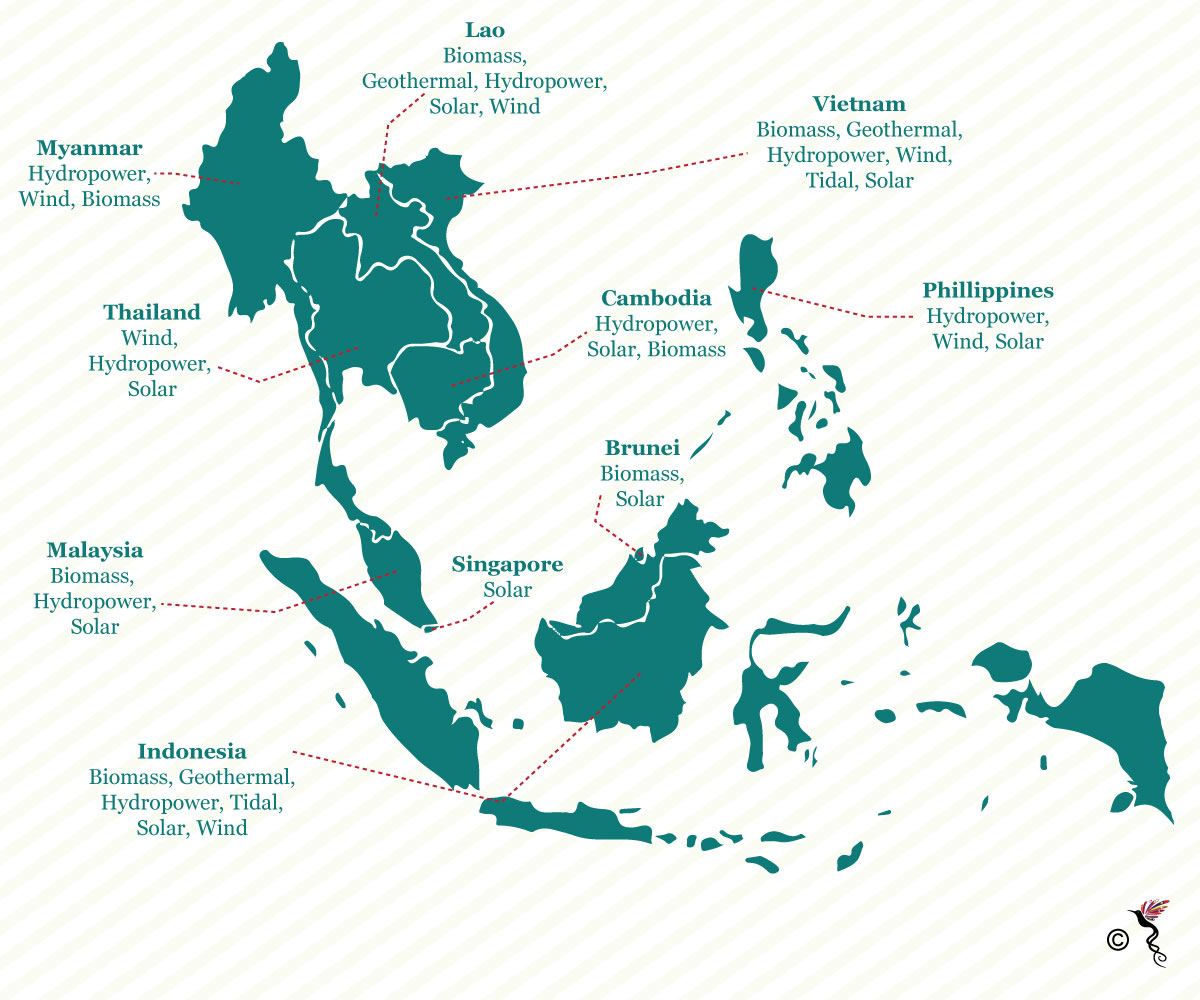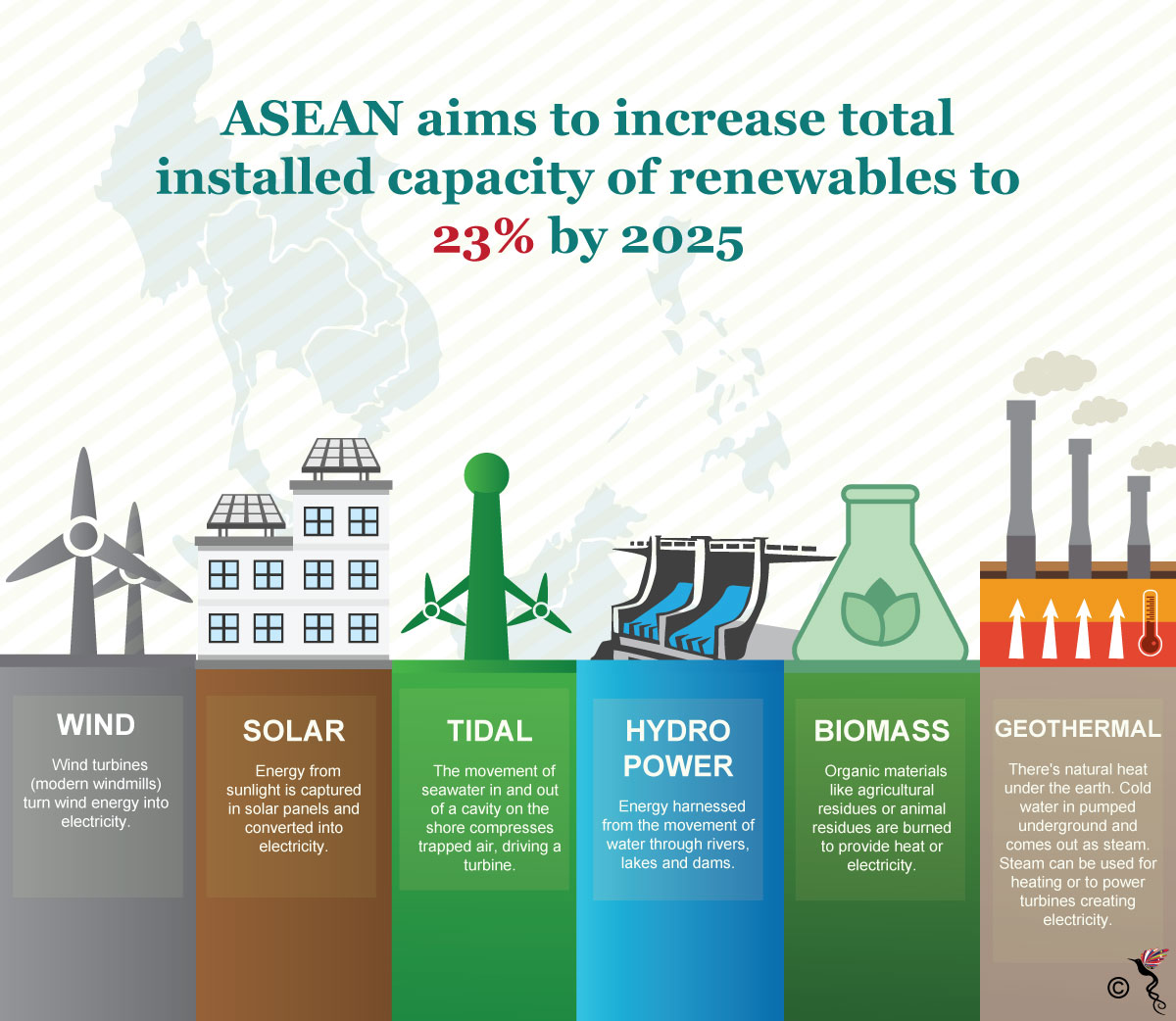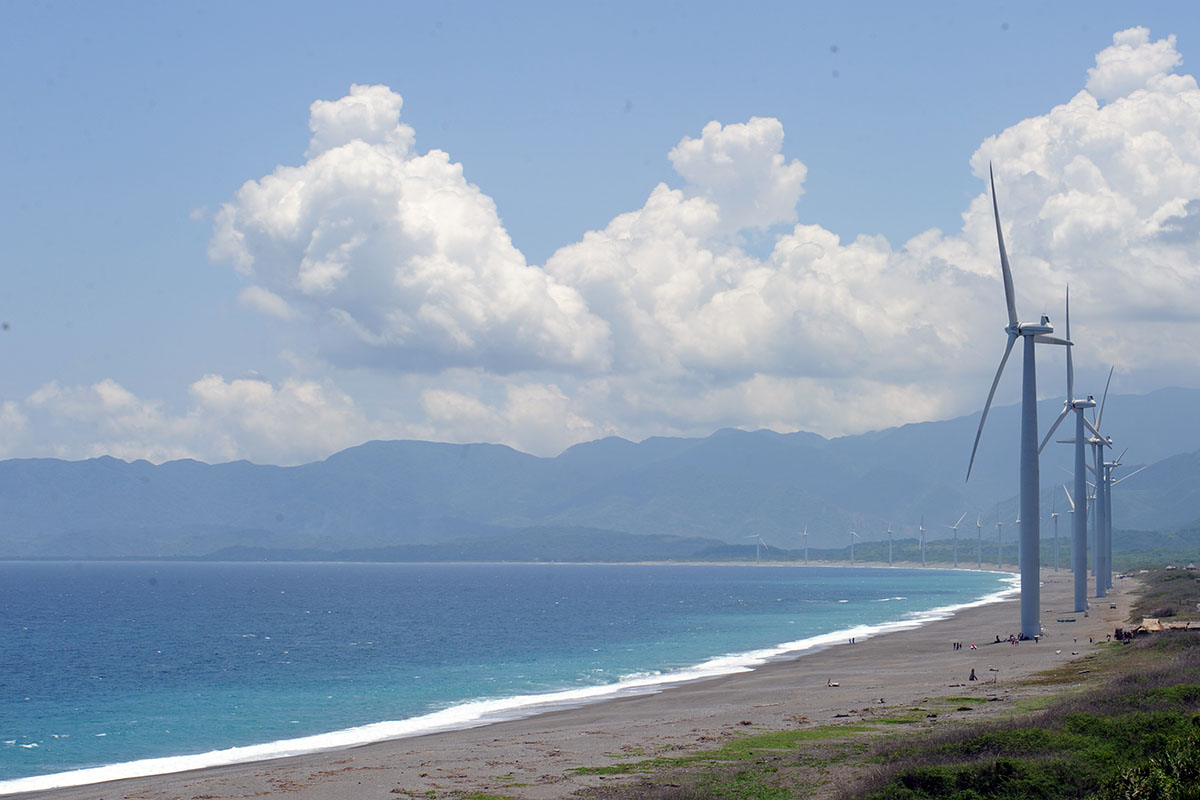The Southeast Asian region is gifted with rich and diverse renewable energy sources. With the abundance of renewable energy sources in the region, it is timely for ASEAN nations to focus on renewable energy installation amidst diminishing fossil fuel reserves and the growing environmental concerns over fossil fuels and climate change, in particular.
The potentials of renewable energy in ASEAN nations
While Thailand is recognised for its biomass potential, Indonesia and the Philippines have huge potential for geothermal power generation. Based on a report titled "Geothermal Power" from IRENA (International Renewable Energy Agency), the global geothermal installed capacity in 2016 was 12.7 GW (gigawatts). The United States (2.5 GW) led in installed geothermal power capacity, followed by two ASEAN member states, namely the Philippines (1.9 GW) and Indonesia (1.5 GW).
Moreover, since Southeast Asia is located geographically closer to the equator, the region is well situated to benefit from solar power potential. In Singapore, the higher than average annual solar irradiation rate of about 1,500 kWh/m2 (kilowatt-hours per square meter) makes solar PV (photovoltaic) a viable source of energy.

The potential of renewable energy sources in ASEAN countries according to the IEA (International Energy Agency).
Wind power is another viable renewable energy system located within Southeast Asia. Wind power is generated mainly in Thailand, the Philippines, Vietnam and Indonesia due to good wind speeds. Amongst these four nations, Thailand was the largest wind energy producer with a total installed capacity of up to 507 MW (megawatts) of power in 2016. As a general rule, a typical commercial wind turbine has a cut-in speed of 4.5 m/s (metres per second) – 16 km/h (kilometres per hour) – or greater. Thus, the minimum wind speed required to install and operate a standard wind turbine is 4.5 m/s.
Also in the same year, Vietnam, Malaysia and Indonesia were the top three producers for hydropower in the Southeast Asian region with an installed capacity of 17.6 GW, 5.6 GW and 5.3 GW respectively. Although the potential of hydropower is infinite, it is not typically considered a renewable energy source but a “greener” alternative to oil, natural gas and coal. Its impact on the environment is less damaging given it emits less GHG (greenhouse gases) than the fossil fuel sources.
Based on data collected from IRENA, ASEAN’s total installed capacity for renewables in 2016 was 57.6 GW – Vietnam (17.9 GW) claimed top spot in the region, followed by Indonesia (8.7 GW) in second place and Thailand (8.6 GW) in third.
Why renewables?
After 50 years of progress, the 10 ASEAN (Association of Southeast Asian Nations) countries have come together as a regional bloc which makes up the world’s seventh largest economy driven by rapid economic growth and urbanisation. However, the demand for energy is also increasing every single day due to the region’s ever-growing population. As fossil fuels are finite resources, they are not a sustainable source of energy in the long run. Prices of such resources will inflate or deflate depending on the supply and demand globally. Moreover, fossil fuels are not an environmentally friendly source of energy due to their CO2 (carbon dioxide) emissions. Renewable sources, on the other hand, are an infinite source of energy which are also friendly to the environment. In addition to that, the cost of producing renewable energy mainly incurred during the initial installation phase as well as subsequent maintenances, making it the more cost-effective option in the long run between the two.
In terms of the impact on environment, the combustion of fossil fuels during the power generating process releases CO2 – which makes up the majority of the GHG emittances. CO2 is one of the heat-trapping GHG that contributes to climate change. As the demand for energy grows, the insulating blanket of CO2 gets too thick and overheats the Earth, as less heat escapes into the stratosphere from the lower atmosphere. This has been identified as a cause of global warming. Subsequently, this will result in the cooling of the stratosphere, which creates a cooling effect that leads to ozone depletion. Unlike fossil fuels, the production of renewable energy does not directly emit GHG, hence it is considered a more environmentally friendly alternative.
When non-conventional methods are used to generate energy, the demand for fossil fuels will also reduce. Subsequently, by reducing fossil fuel usage, it decreases GHG emissions and minimises the impact on the environment caused by human activities in exchange for energy in order to meet the ever-growing demand for power. Therefore, renewable energy promises a clean and sustainable future for the human race.

An explanation of the different types of renewable energy.
Phoumin Han, an Energy Economist with ERIA (Economic Research Institute for ASEAN and East Asia), said in an email reply to The ASEAN Post, “fast evolution of energy technologies brings renewables into competitive market. The technological advancement has led to a dramatic decline in renewable energy cost.” Due to the advances and progress in technology, renewable energy sources are no longer considered a luxury but has become affordable for many low and middle-income economies, including those in the ASEAN region.
What is ASEAN's role in promoting a sustainable future for all?
Collectively, ASEAN aims to increase its total installed capacity of renewables to 23 percent by the year 2025 in the ASEAN Energy Mix, according to the APAEC (ASEAN Plan of Action for Energy Cooperation) 2016-2025. ASEAN is also working on a common roadmap called the "Remap Options for a Clean, Sustainable and Prosperous Future". This roadmap provides a breakdown of renewable energy potential by country, sector and source. It has also established guidelines to help the 10 ASEAN countries achieve their individual targets.
When contacted by The ASEAN Post, Frost and Sullivan’s Principal Consultant (Energy & Environment) Suchitra Sriram said, “renewable energy sources will play a key role in strengthening energy security and reliability. As a result, a majority of the countries in the region have introduced renewable energy targets as part of their power development plans.”
To address the issues of climate change, ASEAN is working towards energy diversification and using these indigenous energy sources efficiently. To this end, the regional bloc and individual states have been developing and implementing renewable energy initiatives, as well as promoting open trade, facilitation and cooperation in the renewable energy sector. The deployment of new technologies in the renewable energy sector in the 10-member states was initially based on policies to reduce fossil fuel dependency, but later included policies that mitigate environmental impacts of fossil fuels. The ASEAN's RE-SSN (Renewable Energy Sub-sector Network) is responsible for the implementation of renewable energy programmes which increase the diversity of the region’s energy supply and reduce the environmental impact caused by power generation.
In a joint statement made by the AMEM (ASEAN Ministers on Energy Meeting) and IRENA on September 28, 2017 both parties agreed “to strengthen long-term cooperation between ASEAN and IRENA with a view to scaling-up renewables in the ASEAN region.” In the statement, Director-General of IRENA Adnan Z. Amin said, “the region possesses plentiful renewable energy resources which could be harnessed to assist the region in fuelling economic growth, meeting growing energy demand, achieving greater energy security and meeting climate objectives.” This strategic partnership will help accelerate the region’s transition to low-carbon, sustainable energy and boost its climate resilience.
According to Han, “although ASEAN countries are endowed with renewable resources, to realise their potentials to tap renewable energy sources, is to have an enabling policy framework that provides a long-term government commitment and credible targets will be needed. ASEAN may need to consider a wide range of policy options and instruments, although it has already targeted a 23 percent share of renewable energy in primary energy supply by 2025.”
Renewables, changing the future of energy generation
Han also said, “amongst ASEAN – Thailand, Malaysia, Singapore, and Indonesia are spearheading in the promotion of renewable energy. They also have policies to promote renewable energy.” He further added that leaders have realised that renewable energy has the potential to become the main source of energy in the future. “The renewable energy sources have proved to be a tremendous future energy,” Han concluded.
As policy makers, private sector practitioners and the general public are made aware of the benefits of using clean energy sources, it will help to drive the development of the renewable energy sector as an alternative to conventional energy sources like fossil fuels – and ASEAN's aim of achieving its goals by 2025 will finally become a reality.
